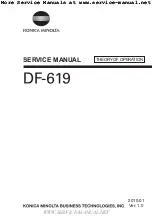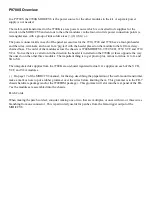
2-3
LIFTING:
1. Always refer to Crane Capacity Chart in operator's compartment before handling
load. Do not exceed load ratings. Under some conditions the standard capacity
ratings cannot be recommended and must be adjusted downward to compensate for
special hazards, such as weak supporting ground, wind, hazardous surroundings,
operator inexperience, etc. The weight of the load should always be known.
2. Be careful to prevent load swinging. A swinging load can cause instability or loss of
control of the load. Be aware that the Anti-Two-Block System and the Rated
Capacity Limiter can cause sudden stopping of boom movement, which can cause
the load to swing. Move the boom slowly whenever these systems might stop the
boom.
3. Do not allow anyone to put any part of
his body under a load. The load may
lower or fall if there are damaged parts in
the crane. Also, the load may drop a
short distance due to thermal contraction
of the hydraulic oil in the cylinders.
4. Do not use crane to drag loads sideways. 5.
6.
7. Level the crane before lifting. A small incline will significantly reduce the capacity.
Use appropriate cribbing under the outriggers for leveling. All outriggers must be fully
extended to use the ON OUTRIGGERS ratings.
8. Always use outriggers if possible. If you must lift on rubber, keep the load as close to
the ground as possible to prevent tipover. Move the load very slowly and use tag
lines to prevent load swinging.
Summary of Contents for IC-20-1K
Page 6: ...1 2 DIMENSIONS AND ORIENTATION IC 20 1K...
Page 7: ...1 3 TURNING DIMENSIONS...
Page 25: ...2 11...
Page 26: ...2 12...
Page 36: ......
Page 45: ...3 9 IC 20 LUBRICATION CHART...
Page 49: ...3 13 JIC SCHEMATIC...
Page 51: ...3 15 STEERING SYSTEM...
Page 53: ...3 17 IC 20 PROPULSION SYSTEM...
Page 63: ......
Page 64: ......
Page 65: ......
















































